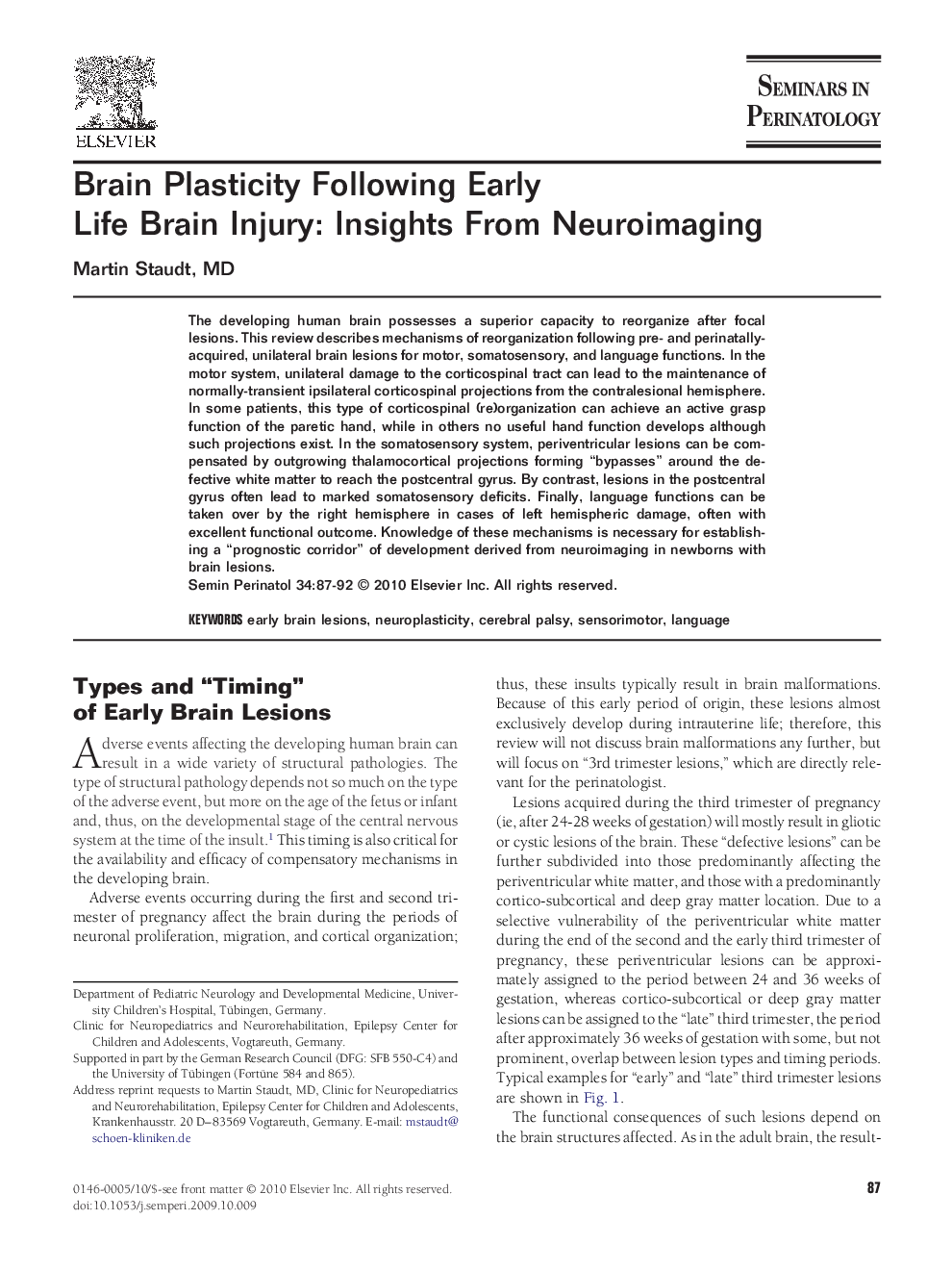| Article ID | Journal | Published Year | Pages | File Type |
|---|---|---|---|---|
| 3836941 | Seminars in Perinatology | 2010 | 6 Pages |
The developing human brain possesses a superior capacity to reorganize after focal lesions. This review describes mechanisms of reorganization following pre- and perinatally-acquired, unilateral brain lesions for motor, somatosensory, and language functions. In the motor system, unilateral damage to the corticospinal tract can lead to the maintenance of normally-transient ipsilateral corticospinal projections from the contralesional hemisphere. In some patients, this type of corticospinal (re)organization can achieve an active grasp function of the paretic hand, while in others no useful hand function develops although such projections exist. In the somatosensory system, periventricular lesions can be compensated by outgrowing thalamocortical projections forming “bypasses” around the defective white matter to reach the postcentral gyrus. By contrast, lesions in the postcentral gyrus often lead to marked somatosensory deficits. Finally, language functions can be taken over by the right hemisphere in cases of left hemispheric damage, often with excellent functional outcome. Knowledge of these mechanisms is necessary for establishing a “prognostic corridor” of development derived from neuroimaging in newborns with brain lesions.
